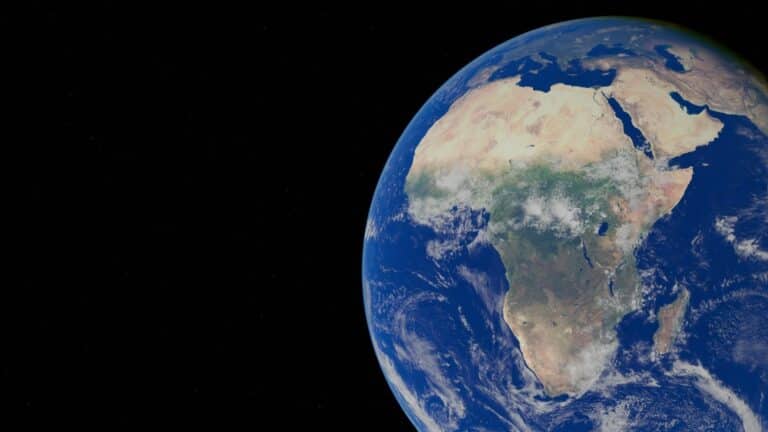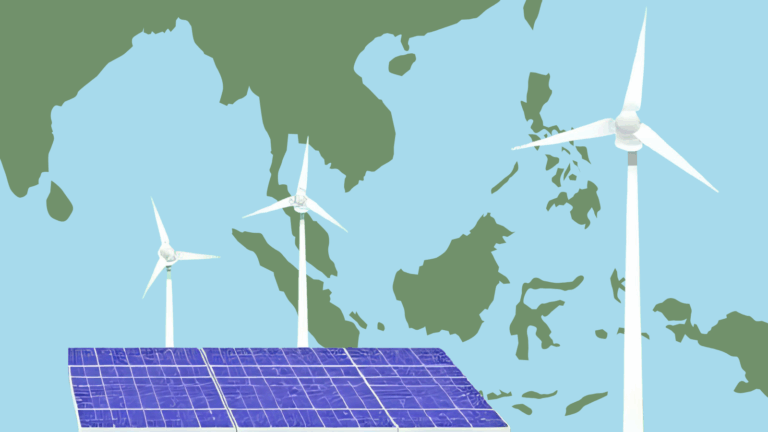This website uses cookies as well as similar tools and technologies to understand visitors’ experiences. By continuing to use this website, you consent to Columbia University’s usage of cookies and similar technologies, in accordance with the Columbia University Website Cookie Notice.
Guest
Kate Finn
Executive Director, First Peoples Worldwide
-
Transcript
-
Kate Finn: In the United States, we have consultation, right? Which is engagement between an entity and tribes. But consent is leaving room for that moment of yes or no or a conditional no or a conditional yes, and then proceeding with the rest of the project. So consent is the ability for tribes and indigenous peoples to say no, and that’s not the regime we have in the United States. We have a consultation regime that shares information but doesn’t always accept that no.
Bill Loveless: Across the United States, Native American communities deal with the impacts of the energy transition. Many large-scale renewable energy projects and transmission lines and more recently, mining sites for critical minerals are built on our near-tribal lands. For example, the federal government plans to loan billions of dollars to Lithium Americas to develop a lithium mine in Nevada at a location known as Thacker Pass, which is sacred to regional Native American tribes. And these projects are not always welcome.
With the tumultuous history of energy development on indigenous lands, many tribes push back on citing new infrastructure in their territory. So how is the energy transition impacting Native American communities and what are the advocacy groups and the federal government doing to protect indigenous rights and lands? This is Columbia Energy Exchange, a weekly podcast from the Center on Global Energy Policy at Columbia University.
I’m Bill Loveless. Today on the show, Kate Finn. Kate is the executive director of First Peoples Worldwide, an organization focused on upholding the rights, sovereignty and economic power of indigenous people of around the world. She was the inaugural American Indian Law Program fellow at the University of Colorado law where she worked directly with tribes and native communities. Her recent work focuses on the impacts of development in indigenous communities and embedding respect for indigenous peoples into routine business operations.
Kate joined me for the interview during the recent Columbia Global Energy Summit at Columbia University in New York. We discussed the history of conflict on Native American lands over energy projects and how that history influences energy development today. We also talked about the rise of critical mineral mining and what it means for indigenous communities. I hope you enjoy our conversation. Kate Finn, welcome to Columbia Energy Exchange.
Kate Finn: Thank you so much for having me.
Bill Loveless: Well, thank you for being with us and joining us here in New York. It’s exciting. It’s an exciting time to be discussing issues like this and perhaps an important time to be discussing issues such as this. But first, tell us a little bit about yourself, where you’re from and how you got into the work that you’re doing today.
Kate Finn: Absolutely. Well, thank you so much for having me. It’s so wonderful to be here and to speak to you and to speak to all of the experts that are here for the Energy Summit. And what also brings me to New York this year is the United Nations Permanent Forum on Indigenous Issues. So I’ve spent the last day or two running into friends and colleagues from all over the world, and so I’m so glad to be here and speak about indigenous issues. I’m Kate Finn.
I’m the director of First Peoples Worldwide, and I am a member of the Osage Nation. The Osage Nation has roots in the Missouri River Valley, but now has reservation land in Oklahoma. And I myself live in Los Angeles. And so my team is spread out all over the country, and it’s just wonderful to be able to bring these issues to you today. And I came to this work. So at First Peoples Worldwide, we work on shareholder advocacy and building momentum for indigenous peoples through shareholder advocacy.
And I came to this work as an attorney. For many years, I was an attorney in Indian country and working really closely on the issues of the social and environmental and cultural aspects of development in Indian country. And when I went to law school, I wasn’t really sure if I wanted to do Indian law, if that’s where I wanted my practice to be or not, or what could it be. As a tribal member myself, I thought, “Well, surely I’ll do pro bono work or something like that.”
But what really caught me, what really, the thing that I loved then and love now about practicing in Indian country is the creativity that we can bring to the solution set. It’s not always just a legal solution. We can talk about policy solutions, we can talk about environmental solutions, we can talk about people, we can talk about the cultural aspects of development, the economic aspects.
We can even talk about sacred places. So all of the things that really build a community, we can bring into our solution set. So I have really enjoyed my practice as an attorney. Now I work in a different sphere in terms of shareholder advocacy, but it’s the creativity and solution set that really drives me.
Bill Loveless: And what really helps is you’ve learned it from the ground up. I mean, just culturally you understand it. It’s in your blood. But you’ve learned the issues right from the ground, from your legal experience, but beyond the law, as you say, for all the other things that you witness in that space. I always say in house, it’s an important time to be discussing these issues, and it seems as though it’s timely too. I was reading recently a column in Forbes by a writer, Elizabeth MacBride, who said quote, “Native American stories are everywhere this year.”
There’s the film, Killers of the Flower Moon, which of course tells the stories of the murder of Osage tribe members by white con artists who sought the oil discovered on the Osage’s Oklahoma reservation. And there’s a book by a Yale historian, Ned Blackhawk, The Rediscovery of America, won the National Book Award for nonfiction. That’s not to say there’s been a major breakthrough in public understanding of indigenous issues, but it seems as though it’s a good time for you to tell the story.
Kate Finn: Absolutely. It’s been really fun to watch all of these pieces come into the public consciousness and to be able to know that the story of the Osage murders is front and center in many people’s minds. For many of us who grow up with these stories, carrying them with us is a story that we always have to tell other people, but now other people are learning and we can have a really rich conversation about what constitutes US history and American history.
One of the things I talk about often in my work is that indigenous peoples in the US, we’ve been here since time immemorial and we are here and there’s so many ways that we are a part of the economy and a part of the culture and a part of every one of these systems. But oftentimes we’ve been invisible by operation of law and policy, by operation of culture we’ve been invisible. But there’s a real ascendance. There’s an ascendance of political power, an ascendance of cultural view. And so I think this idea of invisibility is getting shifted now, and it’s just really great to see that.
Bill Loveless: And First Peoples Worldwide was founded in 1997 by the Cherokee economist, Rebecca Adamson, to shift corporate behavior to stronger consideration of indigenous peoples rights. Tell us about First Peoples.
Kate Finn: Yeah. So our mission has been and is to work from a foundation of indigenous values to achieve a sustainable future for all. And Rebecca was visionary in her time to see the ways that shareholder advocacy could carry the priorities of indigenous peoples. And we’ve been doing that for 25 plus years.
And our work really too, is to build bridges between indigenous peoples and the private sector and to build the business case for free, prior and informed consent, and to really put front and center for investors the reasons that it’s imperative even now more than ever, to consider what their exposure is to indigenous rights risk.
Bill Loveless: And of course, right now we’re talking about green energy, climate change, and other important issues for the economy, for the energy transition, microchip manufacturing also, all of which require minerals, land and water. And this provides Native Americans with economic potential. Right? The Indian Minerals or the Indian Energy Minerals Forum reported that 97% of nickel, 89% of copper, 79% of lithium and 89% of cobalt are potentially on or within 35 miles of Indian reservations. Those numbers are stunning. Did I get them right?
Kate Finn: That’s it. Those are the numbers.
Bill Loveless: That just blew me away when I realized the potential, the economic potential, just where this stuff is, where it’s located. I had no idea, to be honest.
Kate Finn: Yeah. It was stunning when that report came out, to really see where we are in history and where we are in terms of where these minerals are. Because of course, through policy, there’s an incentive to get those minerals very, very quickly and to get those minerals for clean energy. But if we take a step back and we look at Indian country and we look at Native Nations, the goal, the end game for Native Nations is energy sovereignty.
And energy sovereignty is as big as you just said. It’s making sure that Native Nations are really benefiting from this clean energy transition and benefiting from all these things. There’s kind of two parts to that because we have to look at the history. Right? The history again on Osage land of the Osage-reserved mineral rights for the members, for the nation. But because of the law at the time, because of frankly very unjust policies, there was the spate of murders that came from that.
And even today because of the jurisdictional maze, because of the criminal jurisdiction in Indian country, there is an epidemic of missing and murdered indigenous women and missing and murdered indigenous relatives because of that criminal maze. So we have to think through all of the impacts of development. And if there’s 90% of, I think it’s copper or nickel on indigenous lands, we have to look at the history.
And we know that the history is that often when there’s mining on native lands, the economic benefits go elsewhere. They do not stay on the land. But the environmental degradation that occurs, the cultural effects of criminal enterprise that comes because of the boom and bust economy, those effects remain there. So we have to really think through this pattern so that we are not doing this pattern, having this pattern replicate itself again in the name of clean energy.
And I’ll just say too, there’s a huge history of uranium mining in Indian country in particular at Navajo. And I believe that there’s over 500 different locations on the Navajo nation that still need cleanup. And those uranium mines have been closed for some time. And that’s today, that’s now, and this isn’t even contemplating new mines.
So there’s this whole aspect of how do we change this paradigm of interaction with tribes? How do we make sure that the benefits accrue to Native Nations and not just to others offhand. But then we move into the second part that you brought up, which is this opportunity for economic development and the opportunity to develop new economic drivers and to do so in alignment with tribal values.
Bill Loveless: Yeah. And you have a plan. You have a plan for doing that. I want to get into that in a minute, but I think it helps to have some illustration of some of the things that are happening right now. And I’ll start with just lithium. Because it’s so much on people’s minds these days in terms of critical mineral needed for green energy.
And recently the US government offered a Canada based company, Lithium America, Lithium Americas, a conditional 2.3 billion dollar loan for the construction of a lithium carbonate processing plant at Thacker Pass in Nevada. I read it’s the largest proven lithium reserve in North America and the biggest federal investment in a lithium mine to date. The project, as I understand it, has the support of some, but not all the tribes in the region. Has this gone well from an indigenous point of view?
Kate Finn: Frankly, where we have to start with this conversation is consent. Who has consented to the project? Who has incentivized the project and what is going on on the ground? And in this particular project, when we’re talking about Thacker Pass, there is not consensus, there is not consent for this project to move ahead. There are of course, several tribes that have litigation pending to protect that sacred place.
There’s several native organizations that are holding Thacker Pass as a sacred space to them. And so what I see is an incredible risk to companies in terms of being involved in that project. And that risk can be in a number of different ways. We talked about there’s litigation already. So companies that enter that project are already facing litigation costs. There’s reputational risk.
General Motors signed a direct deal last year to produce more or to get minerals from that area, and they are facing some reputational blow back for that. There’s social risk if there’s opposition, and that of course generates reputational risk as well. And really what I see as a moment where the government is not taking into account is government to government relationship with tribes and is not allowing consent to come through because I think that this project, we know and we’ve known since 2021 that there is no consent and there’s no consensus to move forward.
Bill Loveless: Interesting. And it goes to show the conflict these days between the need for these critical minerals and the rights of the peoples on whose lands these minerals reside and yeah, and the government’s role. It’s something I wanted to talk a little bit more about in a minute. But let’s get to the, some of the specifics, your game plan for addressing some of these issues there. Over the past couple of years, First Peoples along with other organizations, launched an initiative called Securing Indigenous Peoples Rights in the Green Economy to address the impact on indigenous peoples related to the increasing global demand for these minerals. Tell us about that effort.
Kate Finn: Yeah. So what really happened, what happened is that in 2020, there was a company in the Taymyr Peninsula in Siberia that their infrastructure fell through and polluted a river that was necessary that a lot of indigenous peoples in the area used for their subsistence.
And a group of us came together to help those indigenous peoples talk directly to the company and to talk to other companies that were sourcing nickel from the area about this risk, about the fact that these people didn’t have fish for this season, that they didn’t have enough food to feed their children, so they were having to send their children to other towns for school.
I mean, these are real life impacts that were happening in 2020. And then we began hearing that these kinds of events were happening around the world and were more likely to happen. Because we have a study now that shows that of the 30 transition minerals needed for this energy transition, 54% are on or near indigenous peoples land around the world.
So what we saw is that as there is an incentive for more minerals in the world, these kinds of things will be happening more and more. So five organizations including First Peoples Worldwide came together. And what we really want is transformative solutions. We want to change the paradigm. We want to make sure that indigenous peoples have the opportunity to consent to projects, they have the opportunity to participate in the projects and to have real decision-making power.
And so to your question about urgency, it’s really on our mind that there is an urgent need to incentivize free, prior and informed consent as enumerated in the UN Declaration on the Rights of Indigenous Peoples in order to not only protect the human rights of the people living on the land where the minerals are, but also to show corporations that it is not in their best interest to move forward without consent.
Bill Loveless: What’s the difference between consent and consultation?
Kate Finn: Yeah. I’m so glad you asked that question. So in the United States, we have consultation, right? Which is engagement between an entity and tribes or an engagement between an entity and indigenous peoples. And usually that has to do with information sharing. It has to do with making sure that there is information in the right language, making sure that there’s a conversation. But consent is leaving room for that moment of yes or no or a conditional no or a conditional yes. And then proceeding with the rest of the project. So consent is the ability for tribes and indigenous peoples to say no. And that’s not the regime we have in the United States.
We have a consultation regime that shares information, but doesn’t always accept that, no. So when I talk to businesses, what I say is though, to the private sector, “You have to design for the hardest case. You have to design for the no. What happens if a tribe or a group of tribes or a group of indigenous peoples say no? How do you operationalize that?” And for me, that really hits on the P, the prior in free, prior and informed consent. It requires meaningful engagement over a period of years to understand where consent lies and what’s going on.
And I’ll just say I heard it again last month. I’ve worked with tribal leaders for a number of years, and several of them have told me in an oil and gas context, “Kate, I’m not against oil and gas. I’m against the route of this pipeline. The route crosses a sacred place. The route crosses an important place in our environment.” And so I think it’s important to see that indigenous peoples are not anti development, they’re not no people, they’re not against one sector or another. It’s about protecting the place that they live and being able to use the resources that they have well.
Bill Loveless: Yeah, you mentioned routes, and immediately what comes to mind is the Dakota access pipeline. It’s been built now, but there was an uproar among tribal peoples over the path of that land. And it was an important episode, I think, in this whole experience. Right? Tell us about that.
Kate Finn: Absolutely. So that’s such a good case study because so much of the information became public. And so I want to say that this series of events that happened with the Dakota access pipeline is something that happens all over the world and has happened all over time as well. But essentially what happened is the company went to route the pipeline that went through North Dakota. They routed it above Bismarck. And because the people in Bismarck said, “No, we do not want that,” they rerouted the pipeline to just above the reservation border of the Standing Rock Sioux Tribe.
So the company went and spoke with the tribal council in 2014, and in 2014, the Standing Rock Sioux Tribe said, “No, we don’t approve of this route.” And that was another instance of a tribal leader saying, “I’m not against oil and gas. This route does not work for us. It is above our water intake for our reservation that is water used for all the different uses. So we would like to not have this.”
So that happened in 2014, but the company moved forward and moved forward. Beginning in April of 2016, we start to see pressure building on the ground. We start to see the camps being built. We start to see real pressure in the media. By fall of 2016, that’s when you see the camp growing to thousands and thousands of people in support of the Standing Rock Sioux Tribe. And then you also start to see the securitized response by the state and by the company.
This is when you start to see dogs biting people. This is when you start to see the sound cannons and the water cannons used. And President Obama made a statement in November of that year. But what we, at First Peoples Worldwide did a study, and what we found is that even though there was litigation, even though there was social protest that’s broadcast on media outlets, the company did not disclose any of the social upheaval to shareholders until November of 2016.
So don’t they have a fiduciary duty to their shareholders to let them know that there’s no consent, that there is litigation, that there is social upheaval? And we, at First Peoples Worldwide did a study, and we found that through that period of time, the company lost 20% on the stock market as compared to the S&P 500 that grew 35%. So there’s a 55% difference there, which shows to me, it shows, and there’s a lot of different factors involved in those studies, but it shows that the failure to respect indigenous peoples, the failure to respect consent, can lead to real material losses.
Bill Loveless: That there was a price to pay.
Kate Finn: Yes.
Bill Loveless: The pipeline was completed.
Kate Finn: Yes.
Bill Loveless: 2017.
Kate Finn: Yes.
Bill Loveless: Oil is running through it as we speak.
Kate Finn: Yes.
Bill Loveless: You say there were other routes that might have been considered, but that didn’t happen. There’s been other disputes as well. Just recently, the papers, the news reported in Oklahoma judges ordered the removal of 84, 84 turbines in a wind farm in Osage County and set a trial for damages. And it was a win for the Osage nation. I mean, that’s 84 turbines. I mean, there in theory would have to be removed under this.
Kate Finn: Yeah. I mean, I think, and it’s a little bit the same story. There was no direct dealing with the tribe. Permits were sought from the county and from the state, but not with the tribe. And the tribe has been saying for almost a decade that they wanted to be a part of the decision making regarding the turbines and how the turbines were built. And they’ve been saying no in some ways to that deal going forward. So it’s the same story.
When we talk about this clean energy transition, let’s not have the same story of consent. And I want to draw attention too to the fact that this happened in Osage County with this wind turbines. And there’s been other considerations, cultural considerations in terms of those turbines. But in Norway, the Sámi people are also working and fighting against a renewable energy company that put turbines on their reindeer herding territory.
And this is one of the last territories in the world where they can herd the reindeer and where the reindeer are able to access all of the places that they need. But the turbines interfere with that. And the Sámi people hold reindeer husbandry as very close to their culture, close to their economic security. And so this company just came in and without consent built those turbines, and an international court ruled in the Sámi parliament’s favor a couple years ago.
So again, it’s the same story of consent. It’s the idea that indigenous peoples, when we talk about the economy, when we talk about energy, we’re also talking about our land as a cultural part of our being, as the spiritual part of our being, as the animals and plants that are on that. And we have to have that holistic view. And I think that’s what we need to turn to if we’re going to do something different within energy transition.
Bill Loveless: You mentioned these efforts abroad. I mean, it reminds me that this is a global organization you’re part of too. Right? We’re not just talking about the United States.
Kate Finn: Mm-hmm.
Bill Loveless: There’s much happening in the rest of the world too, that you’re focused on. There’s a lot of discussion these days of environments, social and governance considerations, ESG, it’s the topic has become quite politicized recently. Are indigenous rights reflected in these ESG considerations?
Kate Finn: Absolutely. So and I’ve worked with a number of different people, indigenous people in the US and Canada to say that there is an eye that threads through all of ESG. So there is an indigenous aspect to be found in every part of that framework. So if you’re talking about the environment, well, indigenous peoples steward almost more than 80% of the biodiversity in the world. So if you’re looking at biodiversity and land ownership and land tenure under the E, indigenous peoples are there.
If you’re looking at the S and you’re looking at your responsibilities to human rights to obtain a social license to operate, well, indigenous peoples are there and there are impacts on indigenous peoples, absolutely. And if you’re looking at governance, what does the company’s procurement policies look like as to indigenous peoples? If they are on the ground in indigenous communities, are they really providing fair labor standards for indigenous workers?
Are they providing fair pay? Are they providing the kinds of economic benefits that the tribe would want? So anyone interested in ESG, I think has a really ingrained responsibility to look at where that impacts indigenous peoples. And yes, ESG has become more politicized over time. And I would just say that again, there is this urgent need as we look at the critical minerals that… or the ways that policymakers are captioning critical minerals that all companies, all policymakers need the data that indigenous peoples have.
They need to know who is on the land. They need to know what is going on. And I always give the example that there’s so many companies that are operating in the Arctic or in very sensitive ecosystems. Right? Well, the people that live in those ecosystems are going to know about the permafrost. They’re going to know if the permafrost is thawing faster or slower.
They’re going to know if the infrastructure that’s built is sinking or not. That is information that a company needs to know. They will know if a tailings pond, if the climate is getting warmer and there’s more humidity in the air, and the tailings pond is leaching chemicals into the land. Those are things that tribal preservation officers might know.
Bill Loveless: I get the impression there’s still a big gap, that we were talking about consent and consultation before, and you have discussions with people, with corporate leaders, corporate representatives. The gap is still there. It still seems as though it’s significant.
It seems as though there’s a long way to go before there’s more of a consultation and consent, a consent between these parties or among these parties. And yet the urgency of mining and processing these minerals is tremendous right now. Do you see some signs of progress? Do you feel as though that this gap can be closed to some extent in some reasonable period of time, not only for the corporate needs, but also for the indigenous needs?
Kate Finn: Yeah, absolutely. I mean, the-
Bill Loveless: Can we wait? How long can we wait? How long can they wait?
Kate Finn: Right. That’s the question, right? We’re here in the world, and I do believe a lot of these incentives for transition mineral mining come out of an ethos of wanting to solve the climate crisis, to build a healthier planet for the planet itself and for the people on it. And so if we really look at that, what I think is we have to solve for both at the same time.
This is a moment where we can’t just do a linear solution. We need all of the solutions. We need everything to happen at the same time. And so in a world where it still takes 15 to 20 years for a mine to get up and running and to be sited and permitted and built and all of those different things, and in a world what gives me hope, you asked me what gives me hope. We know that in cases where there is consent, projects move forward well.
Bill Loveless: Okay. So let’s talk about where there is consent and projects move well. We’ve talked about some of the pitfalls and some of the projects that haven’t gone so well from an indigenous point of view and considering their interests. What’s an example of where things are going well?
Kate Finn: So the best examples that I can give are the examples that are indigenous led, the examples where tribes themselves are building and participating in the economy in a really big way. This is an example like Navajo Power, which is a business out of the Navajo nation that really is looking to build utility scale solar for Navajo people.
And what I love about this business is it starts with people walking the land with the folks who live on that land and learning about the land itself. Are there ancestors who are buried here? Are there ceremonies that are conducted here? How much sun does this place get? What does it look like? And it goes from there, not only to build and scale solar for use of the Navajo people, but to sell solar back to the energy grid.
Bill Loveless: And it’s huge. I mean, it’s what, 2,250 megawatt coal? Well, it replaces a 2,250 megawatt coal plant.
Kate Finn: Exactly.
Bill Loveless: In Arizona. And it’s huge. I mean, the solar farm would be huge.
Kate Finn: It’s huge. And if you want to look at what does just transition look like in real time, what it looks like to close a coal mine, and truly the devastation that comes along to the local economy with that, but then also to look to build new economic drivers, to build an energy grid that’s useful for the people there and also as an economic driver, this is Navajo Power. And they’ve built a capital stack that really allows for a huge amount of runway and scaling up. So I think that in the clean energy economy, it’s tribes and indigenous peoples who have the solutions that we need as a global community.
Bill Loveless: Yeah, that would be the one example you’d point to of success?
Kate Finn: I think that’s one example of success. There are tribal initiatives around the US to build infrastructure for electric vehicles in the Midwest. There are other renewable energy projects from New York to California. And I would say too, when we talk about this issue of energy, we have to also look at the issue at the fact that so many, in the United States is true, and certainly all over the world, there are indigenous peoples living in places that still do not have electricity, and they do not have easy access to electricity, to the internet, to water, all of those things.
And yet there are electric wires passing over their heads. So when I talk about global solutions, and you think about native communities, these are communities in many cases, not all that live at the end of the energy and infrastructure. So when there’s an energy disruption, they’re usually the ones whose power is first off and last on. So if we look at places like the Blue Lake Rancheria in California, many years ago, they set forward to build a micro-grid for just that instance because they often had energy disruptions. So they built a micro-grid that included, I believe, tribal buildings and the casino.
Well, there were wildfires in 2019. Because the tribe had a micro-grid, they were actually able to help the entire county that didn’t have any power during that wildfire event. And they were able to actually have some of the patients from the local hospital use that micro-grid. That is the kind of innovation that we need in this world and when there’s instability in the climate. And so I think if we look at the solutions that indigenous peoples have built and we provide access to capital, access to the energy grid, and really think through these policies, those are the solutions that we can scale.
Bill Loveless: We’re here at the Center on Global Energy Policy. Our great interest is in energy policy and the ways it can be most effective in bringing about effective solutions for green energy transition. We look at what different governments are doing, including the Biden administration. And there I read the word tribal leaders are growing frustrated with the Biden administration and its ambitious plans for clean energy projects that could infect their ancestral lands.
And recently, the Washington Post Maxine Joselow reported about an electric transmission line that would cut across a portion of the San Pedro Valley in Arizona. You were mentioning transmission lines a minute ago. And she reported quote, “While the White House has worked to repair the federal government’s relationships with indigenous peoples, that effort is conflicting with another Biden priority, expediting projects essential to the energy transition.” Is this a big bone of contention between indigenous peoples and the Biden administration?
Kate Finn: So what we really need in the United States is to return to a consent framework. And with a consent framework, what that means is that before projects are cited, before they are capitalized, before they are made to happen through the Department of Energy, the Biden administration could know whether or not the tribes agree or disagree. It’s the same as citing an oil and gas project. It’s the same as these other infrastructure projects. There needs to be a way for all of the tribes to have their priorities considered and integrated into decision making.
Bill Loveless: Yeah. The Interior department today is headed by Native American Deb Haaland, a member of the Pueblo of Laguna. She’s the first Native American to serve in that capacity. Has she made a difference on these issues?
Kate Finn: She has made a difference. It’s amazing to have a native woman in that chair and to see her carry out these priorities. And what I see from her is a real attention to, as I was saying before, this holistic view of what’s important to indigenous peoples. She talks about the energy and what different economic development looks like, but she knows and acts on her priorities to think about the cultural impacts of a place.
So she has put in place an effort that’s been rolled out already to rename so many places in the United States that have frankly racist names and that belittle Native American people. But she has made sure that our government is renaming those places and renaming them in ways that are consonant with tribal values. So I think it makes a huge difference to have somebody in that place who can really carry forward those values.
Bill Loveless: Yeah, it just takes time.
Kate Finn: It does.
Bill Loveless: It takes time. Kate, what… Before we leave, I just interested in sort of, we’ve talked about the challenges and the difficulties, but how do you feel about these things looking forward? Are you optimistic that progress can be made in a reasonable time? Each day when you come into this job, what gives you sort of a boost in terms of your outlook?
Kate Finn: That’s a really good question. And when I was asked to join the SIRGE Coalition, I really had to have a reckoning because I was like, “Oh, man. We’ve been really fighting the oil and gas sector and the mining sector and this extractive industry, and do I want to do that again? Is that what the energy transition’s going to be about? Because man, oh man, that took a lot of time.”
But the reason that I joined and the reason that I’m here is because I see in transition an opportunity, I see the growing power of indigenous voices and indigenous solutions. And I think where all of us in all different sectors and all different places are grappling with what does transition mean, I think there’s an opportunity to elevate indigenous solutions and to be part of decision-making.
And so what gives me optimism is that, that we can reframe systems, that we can reframe decision-making, and that we can really see the incredible contribution of indigenous peoples worldwide to biodiversity, to the environment, to our intellectual property, to cultural property. And I think transition is just the time to do that.
Bill Loveless: And the story has taken on greater prominence?
Kate Finn: Yes.
Bill Loveless: Kate Finn, thanks for joining us today on Columbia Energy Exchange.
Kate Finn: Thank you so much for having me.
Bill Loveless: That’s it for this week’s episode of Columbia Energy Exchange. Thank you again, Kate Finn, and thank you for listening. The show is brought to you by the Center on Global Energy Policy at Columbia University School of International and Public Affairs. The show is hosted by Jason Bordoff and me, Bill Loveless. The show is produced by Erin Hardick from Latitude Studios.
Additional support from Lilly Lee, Caroline Pittman and Kyu Lee. Roy Campanella is the sound engineer. For more information about the show or the Center on Global Energy Policy, visit us online at energypolicy.columbia.edu or follow us on social media at ColumbiaUEnergy. If you liked this episode, leave us a rating on Spotify or Apple Podcasts. You can also share it with a friend or colleague to help us reach more listeners. Either way, we appreciate your support. Thanks again for listening. See you next week.
Across the U.S., large scale renewable energy projects, transmission lines, and mining sites for critical minerals are built on or near tribal lands. For example, the federal government plans to loan billions of dollars to Lithium Americas to develop a lithium mine in Nevada at a location known as Thacker Pass, sacred to local Paiute and Shoshone people.
With the tumultuous history of energy development on Indigenous lands, many tribes are pushing back on citing new infrastructure on their land.
So, how is the energy transition impacting Native American communities? And what are advocacy groups and the federal government doing to protect Indigenous rights and lands?
This week host Bill Loveless talks with Kate Finn about the contentious history of energy projects on Native American lands, how that history influences energy development today, and how her organization is working to ensure Native Americans have a seat at the table in determining how best to use Indigenous lands.
Kate is the executive director of First Peoples Worldwide, an organization focused on upholding the rights, sovereignty, and economic power of Indigenous People around the world. She was the inaugural American Indian Law Program Fellow at the University of Colorado Law, where she worked directly with tribes and Native communities. Her recent work focuses on the impacts of development in Indigenous communities, and embedding respect for Indigenous peoples into routine business operations.
More Episodes
Emmanuel Lagarrigue on Climate Investing Today
Investment in clean energy technologies is on course to hit a record $2.2 trillion this year, according to the International Energy Agency. That’s more than twice the amount...
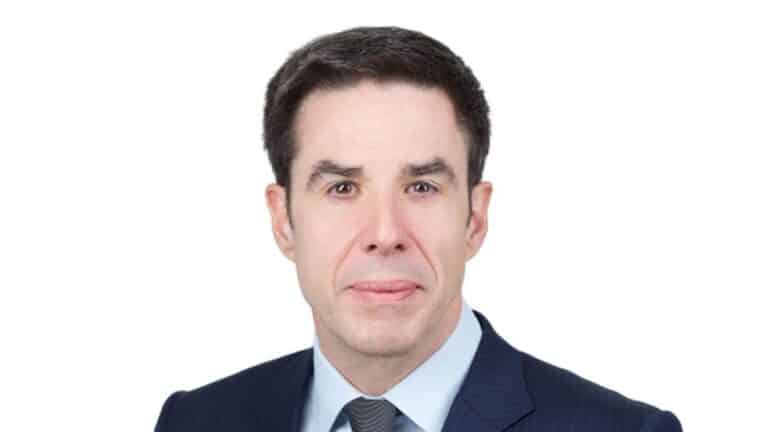
Amy Harder on Climate and Energy Reporting
The national conversation around climate change is shifting. There’s more focus on energy affordability and demand, as well as on the dual role artificial intelligence plays as both...

In a Charged Environment, FERC Faces Demands for Energy
The Federal Energy Regulatory Commission (FERC) regulates the United States’ energy transmission, pipeline networks, and wholesale rates for electricity. For much of its history, FERC was a little-known...
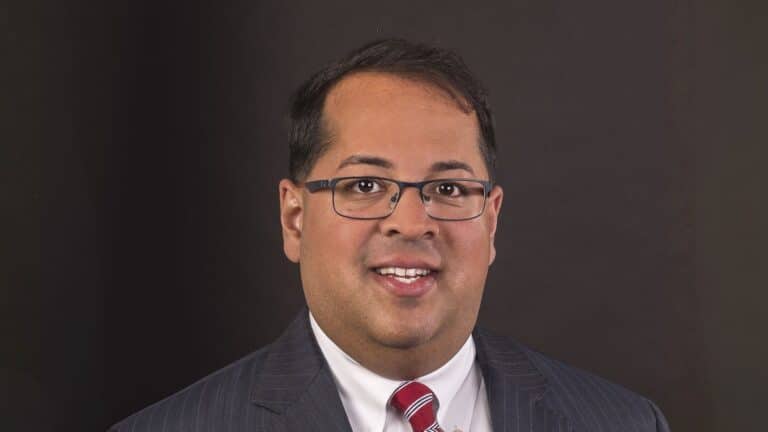
World Energy Outlook 2025: Navigating Divergent Futures
Around the globe, and here in the United States, energy markets face huge uncertainties. They include everything from rising geopolitical tensions to a wave of new liquefied natural...
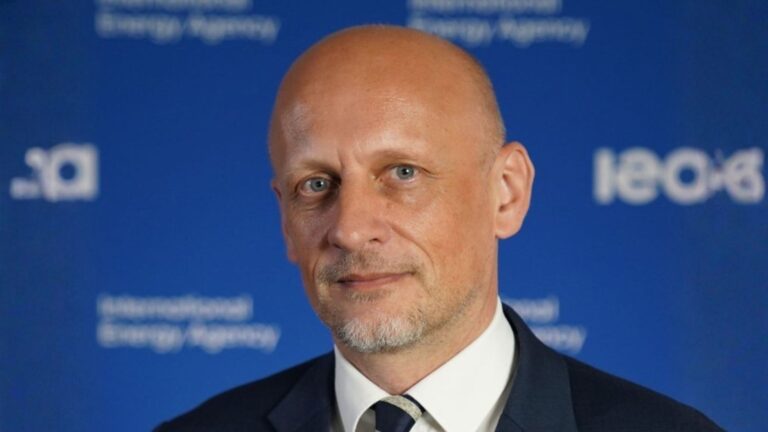
Relevant
Publications

Community Insights on Weather-Induced Energy Insecurity: A Case Study of Extreme Heat and Power Outages in North Lawndale, Chicago
This report explores how residents of North Lawndale, a predominantly Black and historically under-resourced neighborhood on Chicago’s West Side, experience the compounded effects of heat waves and power outages.

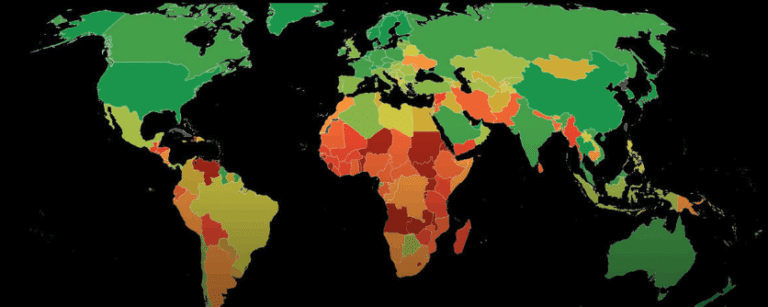
Africa’s Energy PPPs Succeed When Planning, Policy, and Public Interest Are Prioritized
Africa’s energy infrastructure is at a crossroads. Energy infrastructure remains a critical priority across the continent amid severe energy shortages
